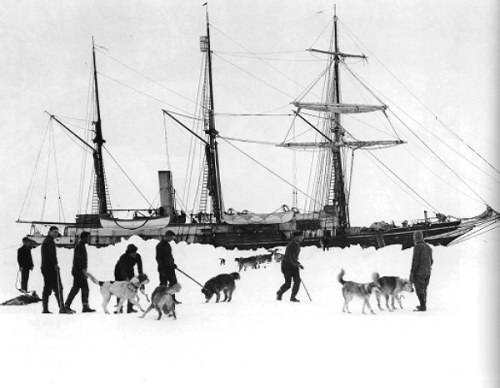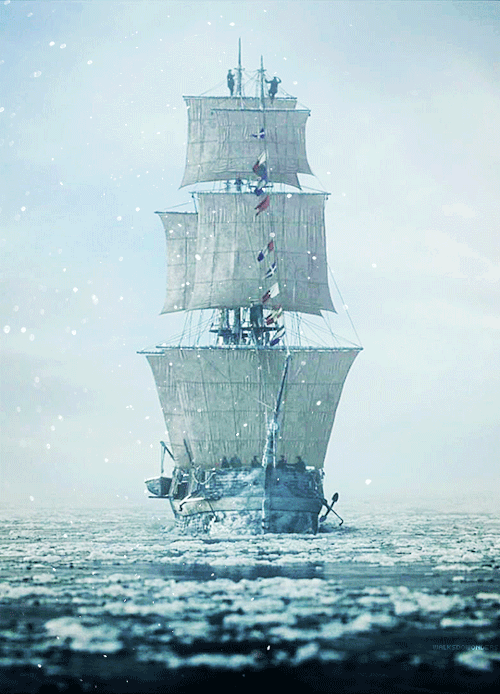The Endurance










The Endurance
More Posts from Flurries-and-frost and Others

men don’t die in antarctica like they used to

In 1869 the New Bedford artist and photographer William Bradford took part in an expedition to northern Greenland sponsored by a Boston family. The trip was documented in this book, with albumen photos that are considered the finest artic photos of the mid to late 19 th century. The book is scarce with copies selling in the 125-150000 range.


Examples of Inuit clothing. The ironic problem of wearing linen and cotton clothing in the arctic was sweat. Activities such as manhauling, warping the ship, and preparing camp were strenuous, and the men would sweat from the exertion. The problem came when they stopped. In low arctic and Antarctic temperatures the sweat would freeze almost instantly, leaving the unfortunate individual wearing what was more or less a sheet of ice.This, of course, ended in frostbite and hypothermia. Several explorers accounts recall clothing and sleeping bags that were like sheets of iron, thawed only with more exertion. The Inuit not only relied on dogs for hauling thus saving unnecessary exertion, they also overcame that tropical adaptation to cooling off all humans have with their clothing. Hides do not absorb sweat as readily, and were softened by chewing. Anoraks also are designed to ventilate, as discovered and described by Amundsen when he began wearing Netchili clothing. The air running through it evaporates the sweat and ends up leaving the wearer virtually free of ice garments.

Sub surfaced in frozen waters
“i would be fangirling so hard if i met him” but im talking about my favorite scraps of fabric from the franklin expedition
-
 ollo314 liked this · 2 years ago
ollo314 liked this · 2 years ago -
 flurries-and-frost reblogged this · 4 years ago
flurries-and-frost reblogged this · 4 years ago -
 inthe-darkofthe-night liked this · 4 years ago
inthe-darkofthe-night liked this · 4 years ago -
 sundayhardcorematinee liked this · 5 years ago
sundayhardcorematinee liked this · 5 years ago -
 alicezeferina liked this · 6 years ago
alicezeferina liked this · 6 years ago -
 grabdatgem reblogged this · 7 years ago
grabdatgem reblogged this · 7 years ago -
 darksidehawk liked this · 7 years ago
darksidehawk liked this · 7 years ago -
 grabdatgem reblogged this · 7 years ago
grabdatgem reblogged this · 7 years ago -
 grabdatgem reblogged this · 7 years ago
grabdatgem reblogged this · 7 years ago -
 marcusbrutus reblogged this · 7 years ago
marcusbrutus reblogged this · 7 years ago -
 hanabellelafrancaise liked this · 7 years ago
hanabellelafrancaise liked this · 7 years ago -
 kevinherlaz liked this · 8 years ago
kevinherlaz liked this · 8 years ago -
 marcusbrutus reblogged this · 8 years ago
marcusbrutus reblogged this · 8 years ago -
 hogarthhughesofrockwell reblogged this · 8 years ago
hogarthhughesofrockwell reblogged this · 8 years ago -
 moradoelefante reblogged this · 8 years ago
moradoelefante reblogged this · 8 years ago -
 weirdpolis reblogged this · 8 years ago
weirdpolis reblogged this · 8 years ago -
 urls-are-stupid reblogged this · 10 years ago
urls-are-stupid reblogged this · 10 years ago -
 urls-are-stupid liked this · 10 years ago
urls-are-stupid liked this · 10 years ago -
 alomegapha liked this · 11 years ago
alomegapha liked this · 11 years ago -
 navalarchitecture liked this · 11 years ago
navalarchitecture liked this · 11 years ago -
 silveirajhonatas reblogged this · 11 years ago
silveirajhonatas reblogged this · 11 years ago -
 kiev4am liked this · 11 years ago
kiev4am liked this · 11 years ago -
 snapewho reblogged this · 11 years ago
snapewho reblogged this · 11 years ago -
 mybellybuttonglows reblogged this · 11 years ago
mybellybuttonglows reblogged this · 11 years ago -
 catesavi reblogged this · 11 years ago
catesavi reblogged this · 11 years ago -
 2nd100yrs reblogged this · 11 years ago
2nd100yrs reblogged this · 11 years ago

